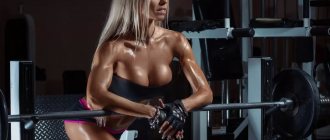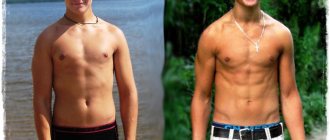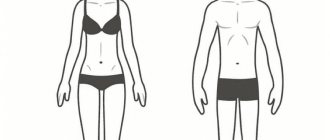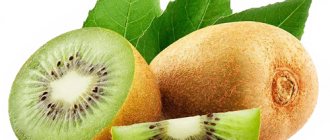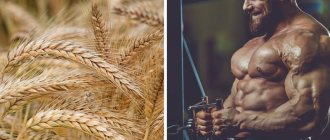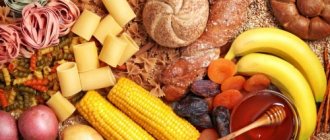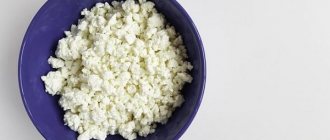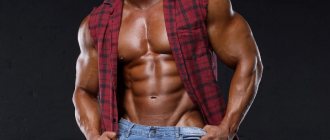Eating before training
As you already understand, pre-workout nutrition begins early in the morning after waking up. And it's a more important meal than the one before your workout. Ask why? Your body was fasting for 8-10 hours before breakfast, and eating after a workout is eating after a 2-3 hour fast.
After sleep, the body experiences a much greater deficit than after training. To awaken the body, drink water or liquid carbohydrates and after 15-30 minutes eat solid carbohydrates and proteins. It can be potatoes or porridge with meat, eggs - to your taste.
Now about eating immediately before the workout itself.
It is usually not recommended to eat food immediately before physical activity. Because during training, blood will flow from the muscles to the stomach. But is this really so? Yes and no. If you eat a solid meal consisting mostly of protein an hour before your workout, your body will have a hard time, in addition to lifting weights, it will need energy to digest the food.
But on the other hand, any meal leads to the release of insulin (a transport hormone) into the blood, which increases blood flow to the muscles, and with it an increased flow of oxygen, micro and macroelements, amino acids and other nutrients. In other words, eating before exercise increases protein synthesis in muscles.
In 2001, scientist Tipton and others conducted an experiment designed to determine how much protein synthesis improves during training after eating a liquid meal (a protein-carbohydrate cocktail).
It turned out that eating liquid food before training increases protein synthesis by at least two times. They also conducted an experiment of this kind after training and came to the conclusion that protein synthesis is less than if you take liquid food before training.
Conclusion: Immediately before training, it is not only possible, but necessary, to consume liquid, easily digestible food to improve protein synthesis.
This could be a gainer or a protein shake. You can use fast carbohydrates, such as chocolate.
And if you want to lose weight, on the contrary, check out the healthy diet menu for weight loss.
Which cottage cheese to choose after training?
There is an opinion that after training you need to eat low-fat cottage cheese. This statement is fundamentally incorrect, since the complete absence of fats in the product leads to the fact that calcium is simply not absorbed from it. It will also not be possible to burn excess weight on cottage cheese devoid of lipids: without fat, the hormones responsible for getting rid of extra pounds are not activated, which means the weight loss process does not start.
Low-fat cottage cheese is an empty, useless dairy product, so it is better to give preference to the 1% or 2% (maximum 5%) option, which perfectly saturates, saving you from obsessive hunger. The product prevents overeating and helps you adhere to healthy eating rules without self-abuse.
Naturally, when we talk about cottage cheese, we mean a pure natural dairy product, and not a sweet curd mass or cheesecakes with added sugar.
How to eat cottage cheese after training
The decision to eat or not after a workout is made based on the purpose for which a person goes to the gym: to lose weight or grow muscles.
In the first case, a woman or girl is recommended to have a cottage cheese snack (100-150 g) after training (in the evening, including) after 30-40 minutes or even an hour or two, while internal fat reserves are used. If you do not wait at least a minimum period of time, the body, having received an alternative, easier way to get energy, will stop burning fat and switch to what it has just eaten.
Low-fat cottage cheese will not return the calories spent on the exercise machine (if you maintain half the proportion: for example, 600 kcal spent 300 kcal ate), but weight loss will also stop. You also can’t delay eating for too long, as it “burns”, releasing energy, not only fat, but also muscle tissue.
In the second case, when training is aimed at gaining weight (usually the male half of trainees is interested in this), it makes sense for a man to close the anabolic window (eat something protein-carbohydrate) if he went to the gym on an empty stomach, and not if he had eaten beforehand.
The anabolic window is the first 30 minutes after training, when muscles are most receptive to the proteins and carbohydrates consumed at this time, and are intensively restored and grown.
Should you eat after a workout?
During training, the body spends energy that needs to be restored. Foods rich in proteins and carbohydrates are best suited for this.
Why proteins and carbohydrates? Carbohydrates in the form of glucose and glycogen are consumed as the main source of energy. When carbohydrate reserves run out, performance drops and fatigue sets in. Proteins are the building blocks of the body; they are needed for rapid muscle recovery and growth, maintaining immunity and metabolism.
In addition, during training, the body loses moisture and minerals, which come out through sweat. To avoid dehydration, pulse fluctuations and loss of strength, drink water or a special sports drink - isotonic. Isotonic is more effective than water: it not only thins the blood and facilitates the work of the heart, but also contains the necessary carbohydrates and salts in the required concentrations for rapid absorption. Carbohydrates supply energy, salts support muscle function and are involved in nerve conduction.
Read more: Isotonic sports drink: effectiveness, composition, application
It is more effective to drink isotonic water half an hour before, during and immediately after training. If the workout is low-intensity and lasts no more than 40 minutes, it is enough to drink a glass of isotonic water after exercise.
No. 3 Gainers and protein shakes
If you are unable to gain the required amount of calories, you should use special gainers and cocktails.
Gainer is a mixture of easily digestible carbohydrates and proteins. You should choose gainers that contain high quality protein (concentrate or isolate). The calorie content of a gainer should not be too high, otherwise the extra calories will turn into fatty tissue.
Gainer can be made at home by mixing cottage cheese, whey protein, oatmeal, as well as fruits and berries. All ingredients must be crushed and mixed using a blender. This cocktail can replace a full meal.
Cottage cheese recipes for weight loss and weight gain:
For further motivation, Power Fit presents a mouth-watering selection of cottage cheese recipes.
Classic protein: milk, cottage cheese, bananas.
To prepare this dish you will need:
- 100 grams of cottage cheese - 2 ripe bananas. - 1-2 glasses of milk.
Mix the ingredients in a mixer until thick and liquid. It is advisable to use full-fat cottage cheese, and add milk gradually so as not to turn your thick protein shake into a liquid one.
Experiment with serving sizes. You understand - different portions are obtained for men and women. If you want less carbohydrates, add less banana. If you want more protein, more cottage cheese.
This cocktail is perfect at any time of the day, as well as immediately after training to close the protein-carbohydrate window.
Homemade weight gainer: cottage cheese with condensed milk.
Cottage cheese with condensed milk is a super-easy dish to prepare. Prepared in a hurry.
- 100 grams of cottage cheese. - Condensed milk to taste.
The recipe is simple. Place the cottage cheese on a plate and pour over condensed milk. Is our cottage cheese with condensed milk ready?
The dish is suitable for those athletes who train to gain muscle mass. You can safely eat both before and after training.
Fitness salad: cottage cheese, eggs, chicken breast and a little salt.
What can I say, before your eyes is a recipe for a real fitness salad. Not sweet, and will work as a variety for a side dish.
- 200 grams of cottage cheese. - 2 hard-boiled eggs. - from 100 grams of boiled chicken breast. - salt and spices to taste.
Cooking: it’s up to you to decide which cottage cheese is best suited for salad.
Finely chop the meat, peel the eggs and grate them. Place cottage cheese, eggs and meat in a bowl. Add salt and your favorite spice to taste. Maybe mayonnaise. Greens will also serve as a good addition to this dish: finely chopped dill or parsley.
Mix all the ingredients and our fitness salad is ready!
Fitness cheesecakes from Denis Seminikhin: get your 50 grams of protein.
← Previous material
Next material →
What to eat to lose weight?
If the goal of training is weight loss, then the list of foods allowed for consumption before training should be reduced. You especially need to remember the “golden rule” of losing weight: calorie consumption should exceed their intake into the body. The pre-workout diet of an athlete who wants to lose weight should not contain high-calorie foods: simple carbohydrates and excess fat. It is allowed to consume only small amounts of complex carbohydrates (no more than 15-20 grams per serving), as well as a sufficient amount of protein (about 20-30 grams per serving). At your own discretion, you can choose one of the proposed dish options:
- A small piece of chicken baked in the oven with buckwheat or wild rice;
- A small portion of white lean fish, steamed with brown rice;
- 2-3 poached eggs or omelet of 2 eggs with cottage cheese and herbs;
- Small veal steak with baked jacket potatoes.
Eating food before training should not interfere with full-fledged exercise, so it is advisable to eat at least 1.5-2 hours before physical activity. However, do not neglect eating before training, since without nutrition you will not be able to train intensely and effectively.
Forbidden food for runners
Pay attention to the list of foods that are extremely undesirable for runners:
- alcohol;
- deep-fried foods;
- fatty desserts;
- sauces and gravies;
- semi-finished products and fast food;
- soda;
- salty quick “snacks” like chips.
Be sure to remember that the distribution of nutrition during running training is not only the key to a successful workout, but also maximum benefit for the body. Remember that training with poor nutrition can harm your body.
Train correctly and go to the start line with the Almaty Marathon!
Express Your Reaction
Similar articles:
Detox. Who needs it?
Perhaps no medical topic is discussed so vigorously on the Internet as organ cleansing...
Almaty Marathon about starts, victories and new goals
2021 is coming to an end. This was very beneficial for the World Class Almaty fitness club team...
Nutrition for the Heart
The fact that the heart is the most important of our organs is known, of course, to everyone. And it’s not surprising that mothers fall...
We are what we eat
According to the World Health Organization, 60% of all deaths are due to disease...
Food vs. Drugs: Dangerous Combinations
What dietary recommendations should you follow while taking certain medications...
Red viburnum is wonderful!
We often meet grandparents selling country berries at markets and near them. Such m...
How to make homemade cottage cheese
If you are a gourmet or just like to experiment, you can make cottage cheese at home. You will need a liter of milk and a tablespoon of sour cream for souring. It is better to take full-fat milk; the ideal option is farm milk, but not everyone has this opportunity.
The sequence of actions will look like this. Pour slightly warmed milk into a glass jar, add sour cream, stir and leave at room temperature for at least a day and a half. The degree of readiness of curdled milk can be determined by the characteristic bubbles in the mass
It is important here not to overcook the intermediate product, as the cottage cheese may turn out sour.
Take a deep pan, put a napkin on the bottom, lower the jar to the bottom, fill it with water so that the level coincides with the upper limit of the mass. Fire is slow. After boiling, be careful to remove the jar immediately after the mixture has curdled. A guideline can be the sharp separation of whey
Please note that the curdled milk should all curdle. Now you can drain in a colander or cheesecloth.
There are recipes online that suggest turning off the heat immediately after the water boils, after which the jar should be left in the pan for another half hour. The situation is fraught with the fact that if the milk has not soured well, some of it will not curdle.
Please help make this article better. Answer just 3 questions.
Important. Do not buy pasteurized and super-pasteurized (“long-lasting”) milk, as it does not sour, but simply becomes bitter
Properly prepared cottage cheese is very tasty, soft and healthy. Preparation does not take much time, and the result will impress even the most picky athletes. The yield per liter of milk is about 300 grams.
We have all heard about the benefits of cottage cheese for athletes and people leading an active lifestyle. All these stories are not a joke or fiction, let's take a look at the composition of cottage cheese to understand why there is cottage cheese after a workout:
- cottage cheese consists of 50-60% casein - a slow milk protein that can provide energy for 5 hours;
- cottage cheese also contains healthy fats and slow carbohydrates, this only increases the duration of the feeling of fullness from cottage cheese;
- cottage cheese contains: calcium, phosphorus, vitamins A, C, PP, zinc, sodium, potassium, iron;
- Cottage cheese is an ideal source of methionine, an essential amino acid that protects against high cholesterol and fatty liver.
Now let’s determine whether you need to eat cottage cheese after a workout if you want to lose weight.
After training, your metabolic rate increases; your body has used up all readily available energy during exercise, and now it needs energy to restore muscles. Where will it get energy from - either from your fat reserves or from the food you eat immediately after training. Needless to say, the first option is preferable, which is why after training to lose weight you should not eat anything, not even cottage cheese.
In 1-2 hours
Your metabolism gradually slows down after successfully breaking down fats to meet energy needs. Now, 1-2 hours after training, you can safely eat cottage cheese with milk, for example. This will fill you with protein and help the growth of new muscle tissue.
Skim cheese
As for low-fat cottage cheese after a workout and generally consuming it at any other time, there are certain contradictions. The calcium contained in cottage cheese is needed for the synthesis of the hormone calcitriol - this hormone starts the fat burning process. But, alas, without fat, neither calcium nor vitamins are absorbed, so by eating low-fat cottage cheese, you are depriving yourself of its benefits.
How and when is it better to eat cottage cheese in bodybuilding?
There is a rule in bodybuilding: “fast” proteins (whey) are taken before or after training, “slow” proteins (casein) - at other times of the day and especially at night, before bed.
Cottage cheese is a source of “slow” casein protein. Most often it is recommended to eat it at night. And this is normal for both gaining muscle mass and losing weight.
But. There is one very important nuance: cottage cheese with carbohydrates (like all dairy products) very effectively stimulates the gain of fat mass. This effect is even stronger than from carbohydrates alone.
Why?
The reason is insulin: when consuming milk, the level of this hormone increases greatly. The higher the insulin, the more efficiently excess sugars in the blood are transported to fat storage.
Considering this, it is better not to eat cottage cheese at night with carbohydrates (jam, bananas, yoghurts, etc.). Otherwise, it will act as a gainer.
Is it possible to eat dried cottage cheese?
Cottage cheese and other milks have another unpleasant effect: their consumption promotes the accumulation of fluid in the subcutaneous layers; therefore, in professional bodybuilding they are completely excluded from the diet when drying the body. Russian bodybuilder Stanislav Lindover speaks about this in particular in one of his interviews.
Is Lindover right that it is better to eat sports casein instead of cottage cheese for relief? The answer is in the material How and when is it better to eat cottage cheese? and is it possible for the night?
Read us on the networks
The combination of cottage cheese with carbohydrates is very effective in increasing... fat mass. This applies to all dairy products (except cheeses)
We recommend : How to gain muscle mass? Beginner's Guide
Proper post-workout nutrition to gain muscle mass: a light snack, this is not a meal
It is worth knowing that the carbohydrate window is not all you need to know when organizing your own proper nutrition, which should definitely help build your own muscle mass. In fact, our body is a very smart machine and it is enough to stretch its convolutions to understand what you need to eat after training, for almost a day, when you need to give it special substances that will become the building materials of your new, healthy and beautiful body.
- Proteins, fats, as well as carbohydrates should be consumed abundantly, not forgetting about other substances.
- Microelements, as well as vitamins, do not directly participate in the construction of new muscles. However, it is undoubtedly necessary to eat them, because they can act as a kind of catalyst.
- Immediately after completing your workout, you should definitely drink water, but not from the tap, but preferably mineral water, to make up for their deficiency.
- After returning home, be sure to organize a fairly hearty lunch. You can eat carbohydrates - rice, potatoes, but also proteins are also necessary, for example, it is very good to consume eggs or meat.
- Fresh vegetables won’t hurt either, especially “watery” ones like cucumbers and tomatoes.
- To your great surprise, it is not recommended to drink a lot of food with food. You cannot drink juices, cocktails, much less tea or coffee. All the liquid that you consume while building muscles, and there really should be a lot of it, must be drunk exclusively in the intervals between meals, an hour after and at least half an hour before.
note
The second meal, which must follow after a light snack during the carbohydrate window, may not be the last of the day. The thing is that if there are still two hours or even more left before bed, you will have to eat again at night in order to achieve maximum results.
Thus, such a meal, an hour or two later, upon arrival from the gym, is only lunch; of course, a lot here depends on the time chosen for sports. It would be optimal to do this in the afternoon, but have lunch after having completed all your planned exercises, and only have a snack first, as experienced trainers recommend.
How much cottage cheese to eat after training?
If you use the product immediately before intense physical activity, the recommended serving is 200 grams. This amount is enough to recharge your batteries and exercise at full capacity. A banana can also be an excellent pre-workout fuel.
To provide yourself with the daily requirement of protein, you need to eat about 500 grams of the product, dividing this portion into several meals.
As for cottage cheese at night, after training you should limit yourself to 150 grams of dairy product. Such a dinner, supplemented with kefir or low-fat sour cream, will help the body absorb amino acids in full, and therefore form muscle mass.
What to eat to grow muscles?
Muscle growth is directly related to the processes of anabolism in the body, the creation of new high-molecular compounds, in our case, the synthesis of proteins (proteins). However, anabolism is always hampered by the processes of catabolism (destruction), which, under certain circumstances, which we will discuss below, can jeopardize the entire achieved result in bodybuilding, or even prevent beginners from progressing in the growth of strength and muscle mass.
As noted above, training is a strong stress, which, first of all, at the initial stage, triggers the active production of the hormone cortisol, which is responsible for catabolism, that is, for their destruction or the inability to increase muscles, however, in order to counteract it, there is one The most powerful anabolic factor is nutrition.
Adequate nutrition during strength training is the key to achieving powerful muscle mass. It consists of the following:
Of course, it is very problematic to count the constant amount of calories eaten and burned, so you need to follow simple rules that will easily provide you with the necessary conditions for muscle growth:
Nutrition and muscle growth
- Increase the number of meals to 5-6 (this could be a protein shake with a banana or cottage cheese with sour cream, not necessarily a full plate of food)
- Eliminate empty, harmful calories from your diet (fast food, chips, soda, foods stuffed with preservatives, fried pies), they will bring you nothing but a decrease in immunity and an increase in bad cholesterol
- Balance your diet (quality proteins, omega 3 fatty acids, complex carbohydrates, fruits, vegetables and greens should form the basis of the menu)
- If you find it difficult to gain weight, buy a gainer, and also protein and of course creatine will not hurt, as the most useful supplement in the kit of a novice bodybuilder or strength officer
- Do not try to increase the amount of protein per kg of weight, it is enough to consume 2-2.2 grams/kg of protein (seafood, tuna, chicken eggs and whey protein are some of the best quality protein products), this is quite enough to create a positive nitrogen balance, that is, the conditions under which muscle growth possible
- Gain your daily calorie intake mainly through the consumption of complex carbohydrates, which gradually saturate the body with energy, preventing excess from being stored as body fat
The most important tool of any “jock” is his sports bag, which always contains clean water, a protein shake, rice with chicken breast and eggs. Of course, it’s not much exaggerated, but you should get the point that the calorie content of foods, their usefulness, determine the processes of anabolism and muscle growth in the body.
There are no special foods for muscle growth, there are only general recommendations that were outlined above. Proteins play a special role in building new muscle structures, so it is advisable to choose protein products with high biological value, first of all:
- Seafood
- Whey Protein
- Chicken eggs
- Dairy products (cottage cheese, fermented baked milk, kefir, milk)
And of course, don’t forget to load up on carbohydrates, because they are consumed to a greater extent by anaerobic glycolysis. Sweets contain few beneficial substances for the body, and besides, they are absorbed very quickly into the blood, so we focused on the complex ones:
Complex carbohydrates in food
- Buckwheat
- Pasta
- Potato
- Porridge
- Rye bread
- Corn
- Beans
- Peas
- Brown rice
Omega 3 fatty acids keep blood vessels in a healthy state, especially important for those athletes who are on a steroid cycle, because the level of bad cholesterol increases significantly. Foods containing omega 3 fatty acids:
Foods containing omega 3 fatty acids:
- Tuna
- Salmon
- Olive oil
- Avocado
- Flax seeds
- Pumpkin seeds
- Walnuts
After successful strength training, muscle growth does not end there, or rather, it has not even begun yet. Only in the process of rest, recovery, and consumption of nutrients does a shift in the biochemical balance toward anabolism begin, and as a consequence, the synthesis of new muscle structures.
Cottage cheese with honey after training
When consuming cottage cheese for muscle growth after a workout, some athletes top it with honey, jam, syrups or other liquid sweeteners. This practice is not approved by nutritionists, since any added sugar (even in the natural form of honey) does not bring significant benefits to the body. You should not “fill up” with dairy products and nuts, since they contain a large amount of fat, for which the gastrointestinal tract will not thank you in the evening.
If you want to supplement your dinner with something, let it be dried fruits (prunes, dried apricots, raisins) or fresh berries. Lovers of salted cottage cheese are offered a variety of greens (parsley, dill, basil) or cucumber.
In the first half of the day, you can make cheesecakes, casserole or dumplings from a dairy product, but without adding sugar or sugar-containing products. Fruits are allowed, especially since mashed banana, for example, will not only naturally sweeten dishes, but also help bring the dough to the desired consistency. This breakfast should not be eaten more than once or twice a week.
As you can see, cottage cheese can be included in the diet both before and after training, both for weight loss and for gaining muscle mass, for both girls and boys, both in the morning and in the evening. Cottage cheese is appropriate not only after strength training, but also after cardio, as well as after any other physical activity.
Pre-workout nutrition
First of all, it is worth paying special attention to what you must eat before training! And this does not mean that you can stuff some bun into yourself right in the locker room - no. The meal should be balanced and take place 1-2 hours before visiting the fitness room.
The meal should be balanced and take place 1-2 hours before visiting the fitness room.
If the stomach is empty, then the whole exercise will be unsuccessful due to the lack of necessary resources in the body - at a minimum, there will be no desired effect and the usual load will not be carried out and, at maximum, there will be a fainting state.
If you eat a heavy meal immediately before training, then physical activity will interfere with the digestion process, blood from the organs will begin to flow into the muscles, which will not have the best effect on the process of playing sports, and in addition to this, lethargy and drowsiness will appear.
Before training, be sure to eat carbohydrates and proteins, and leave fats for meals after training.
Carbohydrates are required to fill glycogen stores, which are used by muscle tissue during training, so their amount must exceed the amount of protein. And some of the proteins, in turn, create an anabolic “prerequisite”, being a resource of amino acids for muscles. .
The serving size should be familiar - like a regular meal, there is no point in exceeding it, because this will only increase the overall calorie content of the diet and will not contribute anything directly to the training process (in a good way). The optimal calorie content here is 200 Kcal for women and 300 Kcal for men (this is enough without fat).
Carbohydrates. Of course, carbohydrates should be slow - brown rice, rolled oats, buckwheat, durum pasta, fresh vegetables.
Squirrels. As a protein component, it is recommended to choose chicken breast, lean beef and pork, turkey, trout, cottage cheese, low-fat cheese, and boiled eggs.
For dessert – apples, grapes, etc.
Pre-workout nutrition for muscle growth
Everyone involved in sports with the goal of gaining weight knows that this is impossible without special nutrition. It is necessary that the body receives not only a lot of protein, but also carbohydrates - they will affect the mass as such, and proteins will contribute to muscle synthesis. Therefore, in addition to the main meal 1.5-2 hours before class (meat with side dishes in all sorts of variations and additions), you need to make one snack half an hour before - a large piece of fruit, berries with a low glycemic index and a protein shake.
Pre-workout nutrition for weight loss
Weight loss occurs under the only condition - burning more calories than enters the body. But this still does not mean refusing to eat before training. You just need to reduce the number of carbohydrates, thereby reducing the calorie content of the serving. For example, you can eat a bowl of soup or a large portion of salad made from raw vegetables with the addition of boiled meat, and half an hour before training, have a snack with cottage cheese or drink strong green tea without sugar as an extra stimulant.
Calorie content of cottage cheese of different fat contents
The main advantage of cottage cheese for people actively gaining muscle mass is not only the high protein content and its beneficial properties. The big advantage of the product is its low calorie content.
The table shows the calorie content of cottage cheese of various fat contents, as well as its content of proteins, fats and carbohydrates per 100 grams of product.
| Fats | Carbohydrates | Squirrels | Calorie content | |
| Low-fat cottage cheese (low-fat) | 1,8 | 1,5 | 20 | 85 |
| Medium fat cottage cheese | 9 | 2 | 17 | 155 |
| Fat cottage cheese | 18 | 2,5 | 15 | 227 |
It is worth drawing a conclusion which is the best cottage cheese for gaining muscle mass.
As can be seen from the table, there is more protein and less fat in low-fat cottage cheese. Therefore, low-fat cottage cheese for gaining muscle mass is considered an ideal product.
Benefits of cottage cheese after training
Cottage cheese is a unique product of natural origin, containing a large amount of protein and microelements
Approximately 50-60% of the composition is accounted for by the slow protein casein, which is absorbed for quite a long time, which is so important when regularly performing strength exercises or when losing weight. Net protein content is 18 g per 100 g of product
Ideal as a snack or part of a diet, it satisfies hunger well and provides a feeling of fullness for a long time. Methionine (an amino acid) contained in cottage cheese reduces cholesterol levels in the blood and prevents fatty liver.
Cottage cheese contains calcium, necessary for the strength of bone tissue, phosphorus, zinc, potassium, sodium, iron, vitamins A, C, PP, B1, B2.
The calorie content of 9% fat cottage cheese is 236 kcal, medium fat content (3-5%) is 110 kcal. The slow carbohydrates it contains contribute to the gradual release of energy, maintaining body tone for a long time.
If we compare when it is better to eat cottage cheese - before or after a workout, then here we should focus on the carbohydrate content in it. They exist, but they are not enough to fully perform strength exercises. In this case, cottage cheese can be used as a snack, but add, for example, a banana, which contains a large amount of fiber.
Please help make this article better. Answer just 3 questions.
The best time to absorb cottage cheese is after a workout, when the supplied protein enters the muscles and does not go to meet energy needs.
When is it better to eat cottage cheese: before or after training?
Cottage cheese can be eaten before and after training. After exercise, it will help close the anabolic window. The carbohydrates it contains will stop the process of muscle fiber destruction, and the protein will promote rapid muscle recovery and active growth.
However, we should not forget that cottage cheese consists of 70% casein, which is digested very slowly. Therefore, it is better to use it before training or in the evening, 1.5 - 2 hours before bedtime. In this case, cottage cheese will provide a gradual supply of amino acids and glycogen necessary to maintain the body’s energy potential and restore it.


